Some cars can spring a surprise, which is undoubtedly the case with this 1971 Dodge Challenger. It has avoided most of the rust problems that often plague these classics. Its upgraded 400ci V8 runs nicely, the rest of the major mechanical components are in good condition, and it would seemingly take little to return the car to a mechanically roadworthy state. However, even with a solid viewing history, the Challenger has failed to attract a single bid since the seller listed it here on eBay in Edinburg, Texas. They set their auction to open at $17,500, and there is plenty of time remaining if this Dodge ticks the boxes for you.
The seller is quite sparing in their history of this Challenger, which is a shame considering the changes it has undergone since 1971. The Fender Tag confirms that the Yellow gracing its panels isn’t original, with the car sporting Butterscotch when it rolled off the line. The first owner teamed that shade with a Black vinyl top, which has since left the room. Challengers of this vintage developed a reputation for rust problems, but this one is surprisingly sound. The seller acknowledges its presence in the lower rear quarter panels, the trunk, below the back window, where the quarter panels join the roof, and the lower edge of the trunk lid. However, they believe that most of the issues are patchable, meaning that the winning bidder may not face the prospect of wholesale steel replacement. It will take an in-person inspection to assess the condition of the trim, and attempting to negotiate one might be worthwhile since the seller appears approachable. The windshield is badly cracked, and the trim rings are missing from the Magnum 500 wheels.
The first owner ordered this Challenger with a 383ci 2-barrel V8, a three-speed TorqueFlite transmission, and power assistance for the steering and brakes. The 383 generated 275hp, providing pretty respectable performance without the Dodge delving deep into muscle car territory. However, that is largely irrelevant, with the original motor vacating the building to make way for a 400ci V8 of 1971 vintage. Its specifications are unclear, but owners don’t typically perform such transplants unless they provide a measurable performance gain. The seller confirms that this Challenger isn’t roadworthy, requiring work on the brakes and fuel system. However, the engine, transmission, and rear end all function as they should. That suggests that returning the car to active service could be a realistic short-term goal.
The Challenger’s interior is a mixed bag, with the seller and photos confirming that it needs dash work, a wheel, and a headliner. The radio and a few minor components are missing, but they aren’t rare pieces that would be difficult to find. However, the Black vinyl on the seats and door trims look nice, and there are no apparent problems with the remaining upholstered surfaces or the plastic. As with the rest of the car, it would be serviceable without much work, and addressing the interior shortcomings shouldn’t cost a fortune.
With over 400 views in the past day and 13 people adding this 1971 Dodge Challenger to their Watch List, I am surprised that it hasn’t attracted a single bid. The car shows promise as a project candidate, but maybe it is simply that the seller needed to set a lower opening figure to entice potential buyers. That can work as a hook, and there is another factor to consider. The seller has the car listed on another couple of sites, stating that this listing could end at any time if they secure a sale elsewhere. Therefore, if you genuinely wish to park this Dodge in your garage, you may need to act fast. After all, he who hesitates is lost.
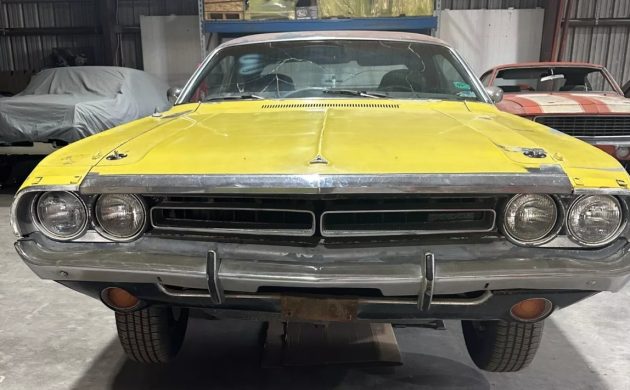
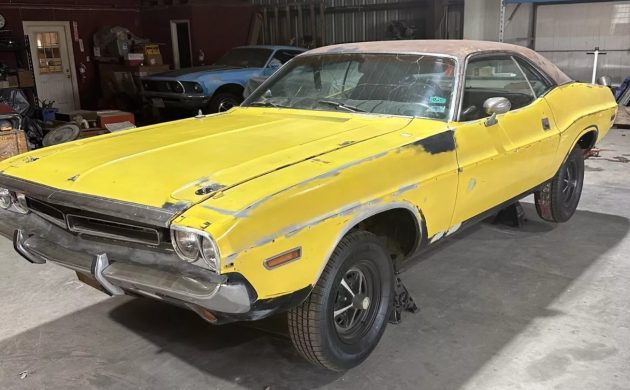
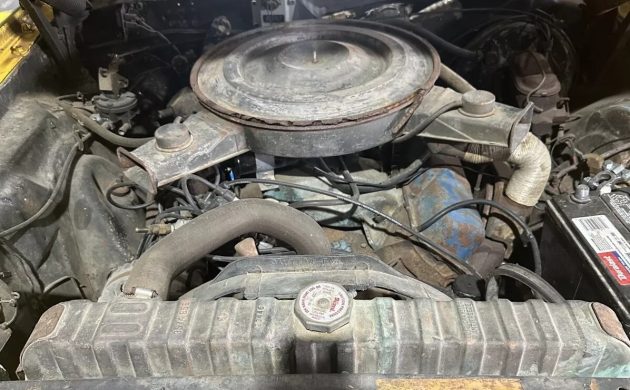
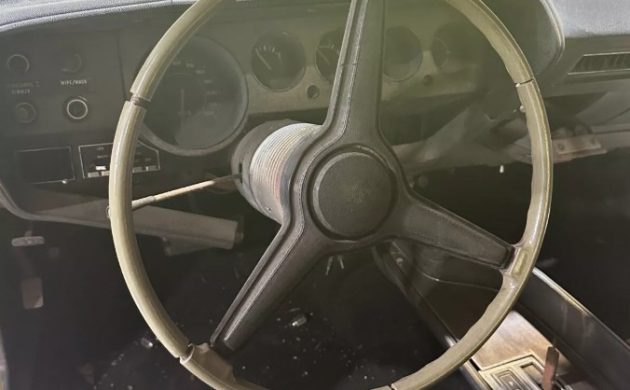
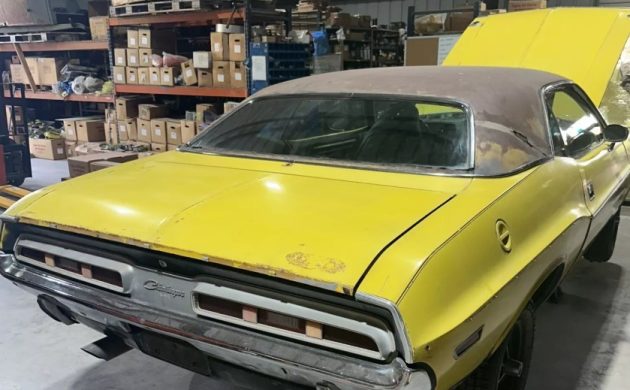


A 383 to 400 transplant isn’t for a performance upgrade, it is out of necessity and convenience. You plop in what you have available or what you can afford when the 383 goes boom. (but not in a good way). Maybe the 400 got some of the 383s nifty internal parts, maybe, but it worketh not at this time. I am willing to bet it came out of an old station wagon and is not a performance engine. Interesting original spec. Standard gauge package (which is okay with me, I thought they looked better anyway, besides, who wants to drive one of these things faster then 120 anyway?), but not the nicer hood. I guess the original intent was no thrills performance. I can understand that, I was once young. Amazing I survived, actually.
They usually do.
BF should create a spin off blog site – Crusty Overpriced Mopars. Seems like there would be no shortage of content.
I like that comment Mike76. There have been a lot of Mopars recently with a lot of high prices for all different good and more bad cars.
C’mon guys, there are plenty of makes that could be placed in the Crusty Overpriced category, why limit it to just Mopars. Mustangs, T/As, Chevelles, Corvettes, even a couple of Grand Nationals lately.
The days of affordable, desirable, restorable cars are over.
Umm, yeah. A 400 is not an ‘upgrade’ under any circumstances. It’s a pig of an engine.
The 400 cid wasn’t introduced till the 1972 model year maybe it was a truck motor in 1971 and it’s corporate blue
The 400 is a 383 with the crank from a 440 It is not a down grade from a 383 it makes more torque and responds to all the same upgrades it is a good engine
A lot of friends used stroked low deck, 383/400’s in their race car, generally using 400 blocks. That’s been a popular engine for at least a couple of decades.
Steve R
Not true!
A 400 is a 383 with a crank from a 440 it makes more torque and responds to the same upgrades it is not a down grade from a 383 It is basically the same enginè
400 is low deck same as 383 but bigger bore and cast crank.
383 forged
Bigger bore then 440 same stroke as 383 361..
440 crank is not a dropin in 400.
400s is a good one to make performance.
Built one years ago ..
Ran very well…stock quite lazy.. but good torq
Isn’t the compression lower on the 400?
Yes, the 400 was a low compression engine only, which is why the stock 400s are such dogs, while the 383 that it replaced was an excellent performer. Engine builders love the 400 block, but only if built to non-stock, performance specs.
The 400 is most certainly NOT a 383 with a 440 crankshaft. The increase in displacement was achieved by increasing the bore. The 383 and 400 share the same stroke. In fact, the combination of a 400 bore and the 440 stroke results in a displacement of 444 cubic inches, because the 400 has a larger bore than any other B/RB engine, being larger than the 440 bore by .022″
This car also does not have a 1971 spec 400. 1971 was the last year for the 383, and ’72 the first year for the 400.
My one and only brand new car was a 71 Challenger RT I bought off the show room floor, it was Plum Crazy purple, with a 383 4V which made it an RT. Ran like a wart hog with boots on. But the girls loved it and it was a big hit at car shows and the root beer stand. That car cured my urge to buy any new car since. I sold it for what I paid for it and learned a cheap lesson.
” I sold it for what I paid for it” You’re lucky! no one ever does that.
junk!